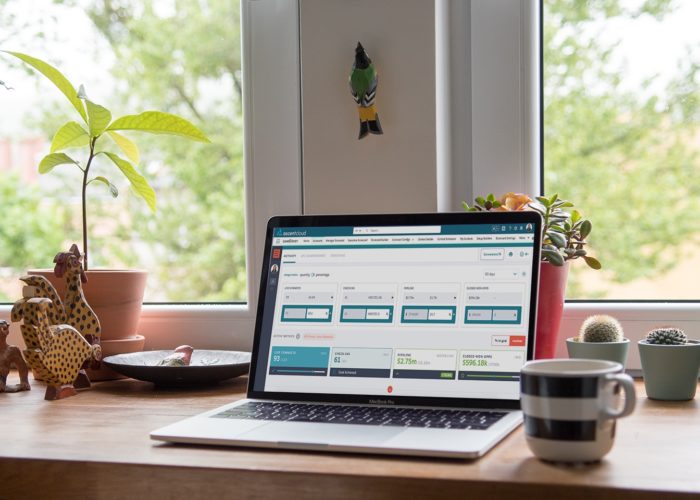Part 2: Build & Strengthen Community
As we wrote in part one, there are plenty of little things you can do to help improve the employee experience when your team is spread out – some in the office, some at home, some in different time zones, etc. In our last post, you learned how to motivate and engage your employees with small gestures and contests that foster a sense of competition and teamwork.
But what if you want to go further than that, to really build and strengthen that community-feel among your team?
Although a shout-out on social media is nice, it isn’t enough. Of course your average sales rep loves to occasionally humble-brag on LinkedIn about the latest accolade they got, but you’re missing something if you think that alone is enough to keep your employees happy long-term. To build a culture of success, as a leader you must help create a shared purpose for your team and empower your employees to do their best work.
According to the 2021 Global Culture Report from the O.C. Tanner Institute, 57% of companies anticipate ‘major’ changes to their culture as the result of the pandemic. That’s a scary number, especially if you’re a leader who takes pride in your company culture. Now is the time to make meaningful improvements that work toward building and strengthening a sense of community and connection among your team members.
While the gimmicky badges for ‘Best Zoom Background’ or ‘Funniest gif’ are great for eliciting a smile or a temporary moment of gratitude, how can you make more of a lasting impression on your team?
Read on for some actionable ideas for making a deeper impact on company culture and the employee experience.
(Peer) Mentorship
You can go a step further and encourage deeper connections through mentorships for high performers to pass along some of their skill sets to employees who are struggling. Peer mentorship can be a boon for company culture as it encourages relationship building, more collaborative approaches, and so much more.

Peer mentoring is helpful for taking some of the responsibility off of you as a manager, too. If employees are mentoring one another, that helps reduce your workload while simultaneously giving the mentees more individualized attention. When done properly, a structured mentorship program can really boost performance.
In order to measure how the mentee is progressing, it’s important that you keep the mentoring sessions consistent (to compare over time). Although each person’s experience is going to be different, some standardized templates or guidelines can really help ensure that all employees involved in peer mentoring get the same level of guidance and support.
Rather than asking the mentor to essentially create their own ad hoc curriculum, give them a set of structured coaching questions to go through with their mentee on a regular basis that is consistent across the entire department. A set of coaching guidelines or prompts can help with quality control.
LevelEleven’s Coach solution allows users to create Coaching Templates that include a set of questions and talking points to use for 1-on-1 coaching sessions. Our product makes it easier and less time-consuming to create a structured process around coaching sessions, especially when you have multiple mentor-mentee groups to keep track of.
In addition to consistency, your peer mentoring initiative will be more impactful if it actually provides the mentees with actionable feedback, rather than subjective criticism or empty praise. Encourage mentors to work with their mentees to determine what types of coaching would be most valuable to them based on their goals or challenges.
Better Coaching and Conversations
It’s more important than ever to keep up a consistent schedule of structured or formal meetings in addition to informal check-ins, so leverage 1:1 meetings and individual coaching sessions especially when working remotely. Digitizing everything, while helpful and necessary at first, has now led to digital fatigue. Employees crave that human interaction that they had in the office, from your top executives down to your interns.
It may sound intuitive, but the best way to address this problem is by showing your own humanity while also making your employees feel that you see them as a human being. You can achieve deeper connections with employees by simply having real conversations with them.
What if instead of focusing solely on keeping meetings 100% productive and efficient, you took the time to ask them how they’re doing? Ask them what’s going on in their lives? Share tidbits of your own life with them.
You can leverage your 1:1 meetings or individual coaching sessions with your employees to connect more deeply in this way. These individual settings provide the best opportunity for connecting with your employees, so use this time to actively listen to them and ask questions, rather than simply talking at them. Allow for that moment of humanity, of human connection, and it’ll go a lot farther than a shoutout on social media.
Reshape Company Culture for the Years Ahead
Connecting on a deeper level with your team goes a long way toward improving the employee experience, just as fostering a sense of community among team members leads to a happy and productive environment. As a leader, all eyes are on you to provide the right guidance, encouragement, and support – especially in this time of crisis. This remote work environment means transparency, communication and support need to be reinforced more than usual in day-to-day workplace culture.
As the 2021 Global Culture Report asserts, “Without taking steps to improve the employee experience and bring people together, organizational culture will suffer. And with it, productivity, reputation, and profitability.” Rather than seeing this as a daunting task, try to see it for the opportunity that it is: the chance to make a strong impact on reshaping your company’s culture for the years ahead.
Are you ready to save your company culture? Request a demo to learn more about LevelEleven’s gamification and coaching products and how we can help your team level up their engagement and motivation.



